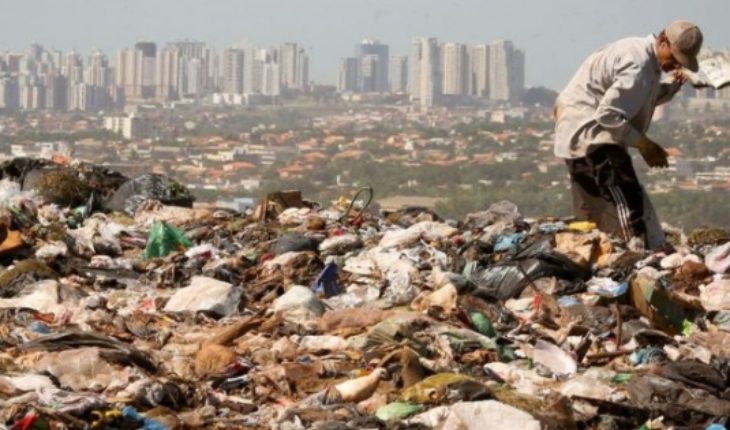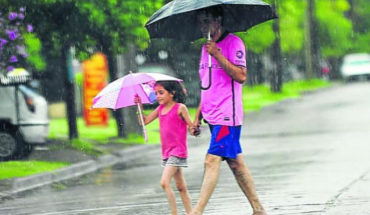in the world occurs more and more trash.
According to a report of the World Bank (WB) published last September, the waste generated on the planet in 2016 reached 2.010 million tons.
According to forecasts by the World Bank, this figure will fire up to 3,400 million tons by 2050. I.e., that in a little more than three decades can generate almost 70% more trash.
7 things you can do to help save the planet the advantages of renting clothes instead of buying it experts from the Agency, which is called to launch “urgent measures” to curb this trend, are running the rapid urbanization and the growth of the population as some of the causes of this problem.
In regions such as sub-Saharan Africa and South Asia, the amount of waste in 2050 will triple and double, respectively.
The use of plastic is one of the most problematic factors.
But the report also says factors “especially problematic” such as plastic, which in 2016 were generated by 242 million tons of waste, whose proper management, reuse and recycling are fundamental to reduce its great impact on the environment environment.
And in Latin America? How much trash are generating the countries of the region and what will be the trend in the coming decades?
The influence of tourism the average rate of generation of waste per capita in Latin America (in countries whose official language is Spanish or Portuguese) is 0.87 kg. the day, which exceeds the world average set at 0.74 kg.
But the difference is even greater if the map of the region includes the English-speaking countries of the Caribbean, most of which are placed at the head of waste generation and to increase the regional average up to 0.99 kg.
And according to the projection of the World Bank, in the year 2050 this figure will be 1.30 kg. daily per capita.
In fact, some of these territories already show figures up to three and four times higher as the Virgin Islands from United States (4.46 kg) and the British (3.75 kg.).
The large influx of tourists in the U.S. Virgin Islands is one of the reasons for its high production of waste. John Morton, specialist in urban environment of the World Bank and head of the study, described the case of the Islands as “the peculiarity of Latin America and the Caribbean”.
In waste generation influences “such people live in a small area and the existence of commercial activities and tourism”, he says to the BBC.
This last element, for example, is one of the reasons that explains the presence of Dominican Republic among the five countries that produce more waste in Latin America.
Income levels the most important factor to understand which countries are those that generate more and less garbage in Latin America, however, is another: the level of income of its inhabitants.
“If people have more money, their consumption will be higher and will produce more waste,” summarizes Morton.
It is not, at all, a unique fact of this region. Around the world, high-income countries generate more than 34% of the waste, even though they live only 16% of the population of the planet.
The level of income of the population of a country is decisive for more or less waste is generated.” In Latin America there are many medium-income countries, so their generation of waste is much higher than in other parts of the world such as Africa, for example”, says the expert.
And this economic inequality within the region, says Morton, which explains that countries like Mexico, Chile and Argentina are the ones most waste generated compared the rate of others such as Guatemala and Bolivia.
The region less recycling report points out how to have proper waste management systems is the basis of a circular economy, in which products can be optimized so that they can be reused and recycled.
But recycling is precisely one of the great unresolved matters in Latin America and the Caribbean.
Recycling is a habit still not widespread in Latin America and the Caribe.segun the data from the World Bank, this is the region least recycling in the world: only 4.5% of its garbage (the world average is 13.5%).
However, it is important to emphasize that again are the English-speaking islands of the Caribbean – where the recycling market is still emerging – that make lower the average in the region.
“Recycling in Latin America lies mostly in the informal sector as people you see picking up down the street,” says Morton.
The market for reuse or informal recycling is common in Latin America.” This adds some value, but has nothing to do with the great public commitment made in countries of Europe or Japan, where it can be recycled up to 50 or 60% of the garbage”.
Waste of food expert key highlights good practices like Argentina, where “the public demand made pressure to encourage recycling as a public policy”, or Colombia, where there are programs for payment or reward for people who they recycle.
Some of their recommendations to stop this unstoppable upward trend in the generation of garbage pass through encourage recycling, reduce the consumption of plastics and the waste food thanks to the education of the population.
It is recommended to efficiently manage the remains of food, which account for more than half of the waste generated in Latin America and the Caribbean.” Debris that can most reduce as a human being are the food, in the case of Latin America and the Caribbean are more than 52% of the total and that a large percentage ends up in landfills,”assures to the BBC the specialist of the World Bank.
To do this, recommended to efficiently manage the remains of food taking advantage of leftovers, taking them to a food bank or even transforming them into compost.
“What is needed is a real commitment, both the population and the States through proactive policies to properly manage waste”, concludes.
translated from Spanish: The 10 countries that generate more and less waste in Latin America (and how are located worldwide)
October 9, 2018 |





